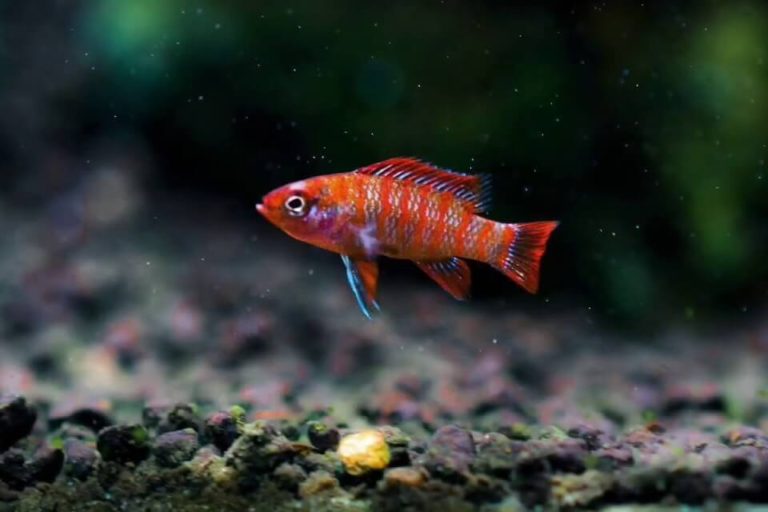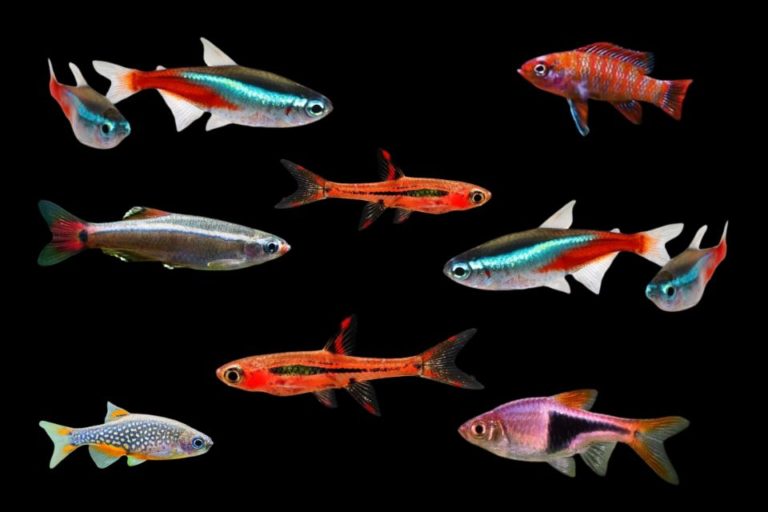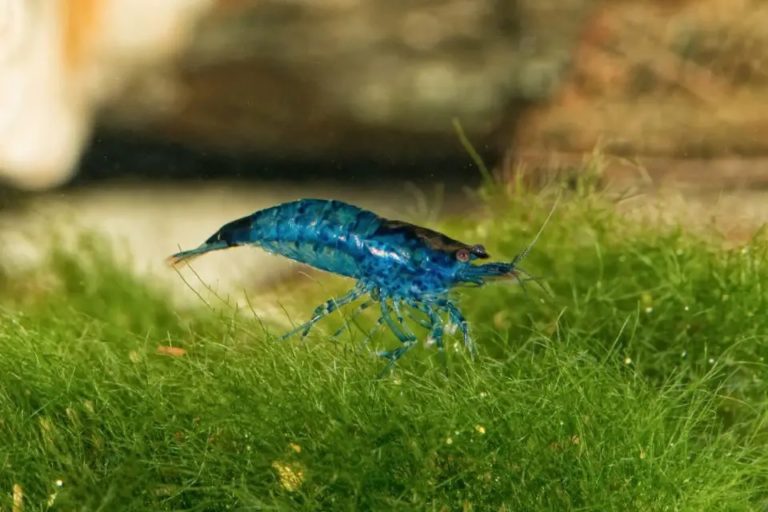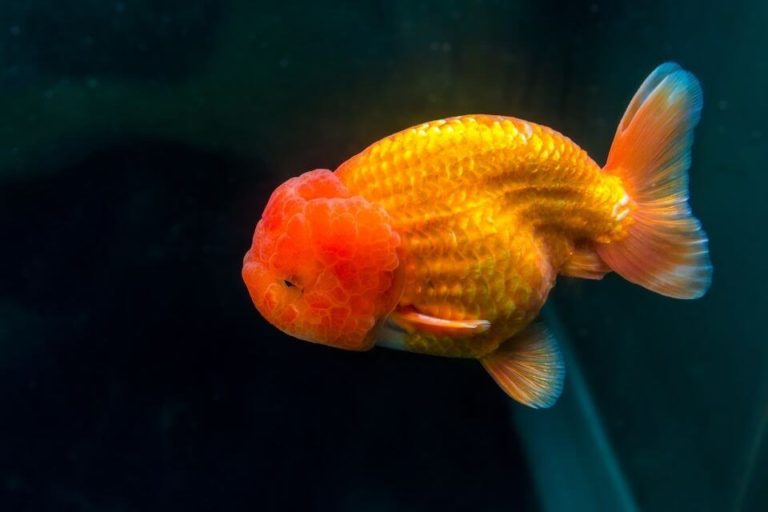Iridescent Shark Fish Care Guide: Tank Setup, Diet and Breeding

Wanna care for an Iridescent Shark? They’re interesting creatures and make a cool addition to any tank, but they definitely have some specific needs.
In this guide, you will find more information about the history and background of this fish species. As well as the right aquarium conditions, required water parameters, and suitable diet to set up for them.
You can also learn about behaviors, gender differences, and breeding habits in this all-inclusive guide. So if you’re thinking of adding one of these sharks to your aquarium, keep reading!
Make sure to learn everything you can about Iridescent Sharks before considering one for your tank.
| Quick Facts: | |
|---|---|
| Common Names | : Iridescent Shark, Siamese Shark, Sutchi Catfish |
| Scientific Name | : Pangasianodon Hypophthalmus |
| Family | : Pangasiidae |
| Origin | : River basins of the Mekong and Chao Phraya Rivers |
| Care Level | : Intermediate |
| Lifespan | : Up to 20 years |
| Size (average) | : 4 feet long |
| Diet | : Omnivores |
| Breeding | : Egglayer |
| Social | : Schooling |
| Temperament | : Peaceful |
| Minimum Tank Size | : 300 gallons |
| Temperature | : 72 - 79 °F (22 - 26 °C) |
| Water Hardness | : 2 - 20 dGH |
| Water pH Level | : 6.5 - 7.5 |
Species Overview
Though their name might scare some people away, Iridescent Sharks are peaceful omnivores that can make a grand impression in any large freshwater aquarium.
This catfish species could not be more different than the terrorizing sharks of the sea; also known as Sutchi Catfish and Siamese Shark, they like to swim in schools and play calmly with other fish species.
It is important that Sutchi Catfishes are kept in large aquariums as they are some of the largest freshwater fish you can find in most pet stores or through fish suppliers.
Due to their size and appearance, they are very highly sought after by aquarium keepers all over the world.
Typical Behavior
Despite what their name implies, Siamese Sharks are very peaceful and non-aggressive. They do not fight other fish or attack others over territory or mates.
In the wild, young Sutchi Catfish are schooling fish, meaning they prefer to stay together in large groups. This is both for safety and social reasons. As they grow into older adults, they tend to separate from their groups.
Iridescent Sharks aren’t just peaceful, but they are often timid as well. Due to their poor eyesight, any large movements or loud sounds that happen outside of the tank can scare them and make them look for places to hide.
They might even hit their heads on the glass as they rush to escape. It is important to keep these sensitive catfish safe. These fish might be big, but they scare easily.
Therefore, they prefer quiet and calm environments with other fish that display the same behaviors.
The only time a Sutchi Catfish will bring harm to another fish is if the fish is so small that it can be perceived as food. A general rule of thumb is not to house tiny fish species with these freshwater giants because it might become their next meal.
Siamese Sharks must be kept together with fish species that are around the same size as them. There are many differences between juveniles, adolescents, and adults that make experienced aquarists interested in acquiring Sutchi Catfish of all ages.
Iridescent Shark Size
Excellent tank conditions and good dietary care are the keys to ensuring your Pangasianodon hypophthalmus live a long and healthy life. With the right environment, these fish species can grow up to 4 feet in length.
They are directly related to the Mekong Giant Catfish, which is one of the largest species of freshwater fish on the planet.
Juvenile Sutchi Catfish grow a lot, and they grow fast. It is important that you should not start with a small tank because the tank space will not be enough for your shark to thrive well when the fish have grown.
Iridescent Shark Growth Rate
These fish grow incredibly fast. Juveniles can grow into adults in as little as 6 months under the right tank conditions and diet. It is important to expand the size of your aquarium by hundreds of gallons to accommodate the massive size these fish can grow to.
Iridescent Shark Lifespan
These fish species are a wonderful aquarium investment because they have a very long lifespan. Healthy Iridescent shark catfish can live up to 20 years old or more. In some cases, they can outlive the other fish in your tank.
Most of these fish species can go through many breeding cycles before the end of their life, making them even more worth the affordable price that was spent on them.
Iridescent Shark Appearance
The iridescent gray and brown skin of this fish gives it the name Iridescent Shark. The shiny skin becomes more stretched as the fish grows older. As juveniles, this fish can be seen along the sides. By adulthood, they are almost completely gray.
Unlike other catfish, Pangasianodon hypophthalmus do not have any bony plates on the outside of their body. Their smooth skin can set them apart from the other fish in your tank.
Their long whisker barbels are used to scan the environment around them as their small eyes do not see very well. These whiskers are crucial to making the fish feel safe and comfortable in the environment.
With an unusual number of fins, these catfish are more delicate to water conditions and temperatures than other fish might be. This is another reason why caring for them requires special knowledge and attention.
Iridescent Shark Colors and Special Markings
While Pangasianodon hypophthalmus start out as shiny, silverfish, they eventually turn brown and gray. As they grow up, they develop two noticeable black stripes on each side of their bodies, on and below their lateral lines.
Iridescent shark catfish have this dull color pattern because their native waters are often murky and dark. The gray skin color helps them blend in and travel through low-light waters with ease.

Iridescent Sharks Care
It is very important to set up the proper conditions and specifications of your tank to help your Sutchi Catfish to live long and healthy lives.
There are several critical aspects of tank preparation that you must secure before introducing these fish to their new home.
Tank Size and Setup Specifications
Not only the Iridescent sharks are some of the biggest freshwater fish species available on the market, but they grow incredibly fast. You must accommodate for this by having a good amount of aquarium space for them, so they do not get cramped.
– Tank Specifications
Some aspects of tank maintenance are the most important when it comes to caring for Sutchi catfish. Make sure you have the following setups adjusted just right:
- Lighting: Unlike most catfish, Siamese sharks are active during the day and like to swim around in low to moderate levels of light. While they are used to swimming in murky waters, having a consistent level of light can help them feel comfortable in their environment.
- Water Filter: Clean water is the key to extending the life of your fish and keeping them healthy. They are used to the soft and muddy rivers of the wild, so they can get messy easily.
- Soft Riverbed: These fish love to hang out near the bottom of the tank, and having a muddy layer for them to rest in can be beneficial to their health.
There are specific size requirements that you should adhere to as well, especially if you plan on raising more than one Siamese shark at a time.
– Iridescent Shark Tank Size
Young Siamese sharks should start out in a tank that is at least 100 gallons. As they grow, they will eventually need to transition to a tank that is 300 gallons.
Anything smaller than this could not only stunt the growth of the fish but prevent it from being as healthy as it could be.
– Tank Setup
It is a good idea to consider a heater for your Siamese Sharks as well. These sensitive catfish need to always be in warmer temperatures in order to survive. Since they are schooling fish, they should be kept in small groups.
Make sure your tank is big enough to accommodate the space needs of all your fish at once.
Make sure to change out 25% of your tank’s water every week so you can keep the waters as clean as possible for your Siamese sharks. This might be a mighty task for a large aquarium, but it is a necessary one to ensure the long life of your fish.
Suitable Plants for Iridescent Sharks
Plants are one of the biggest parts of an Iridescent shark’s diet, so you have to be comfortable with plants being eaten. If you do choose to put plants in your tank, make sure they are not toxic and that they are safe for your fish to eat.
Fast-growing plants can keep up with the diet requirements of your shark while still providing some substrate and scenery throughout the tank.
Good plant options include Hornwort, Pennywort, and Temple plant (Hygrophila corymbosa). These plants are edible and make great spaces for other fish to rest and hide.
Water Conditions for Iridescent Shark
Like most freshwater fish, Iridescent sharks need very consistent and clean water conditions in order to live well. Pay attention to the following water requirements so you can give your giant freshwater fish the best of care.
– Water Temperature
The water temperature must be strictly kept within a thin range of 72 to 79 °F (22 to 26 °C). Remember that Siamese sharks come from tropical regions of the world which are known for having some of the warmest natural water conditions.
– Water Hardness
These fish can live quite comfortably with water hardness levels ranging anywhere from 2 to 20 dGH (Degree of General Hardness). Because these fish species are from the natural muddy waters of East-Asian Rivers.
– Water Acidity
A neutral acidity level is best for your Iridescent sharks to survive, as is the case with most freshwater fish. For this reason, you will want to keep your water at acidity levels ranging from 6.5 to 7.5 pH.
– Water Testing
Test and replace your water every week to keep conditions as clean as possible for your fish. Remember that a quality filtration system can do all the heavy lifting for you by keeping temperatures and hardness levels consistent.
It is still important to monitor the health of your fish as you make these water adjustments to see what works best for them.

Iridescent Sharks Diet and Feeding
What Do Iridescent Sharks Eat?
As omnivores, Iridescent shark catfish can eat just about anything. Of course, certain foods and nutrients are healthier for your fish than others.
Juveniles who are still growing will need a diet that is high and fat and protein, so live fish and meat will be great for them. As they grow into adults, you can start introducing more plant matter into their diets.
Their teeth become weaker and can even fall out as they get older, making them prefer vegetable matter over other fish. A combination of flakes, pellets, live fish, and frozen foods should do the trick.
They will enjoy a combined diet that consists of:
- Pellets and flakes
- Frozen meat and fish
- Vegetable matter
- Plants
- Live bloodworms
Every couple of days, you will want to supplement their regular diet with additional treats such as:
- Brine shrimp
- Feeder fish
- Frozen or live worms
Make sure your food stays fresh and uncontaminated. Keep an eye on your fish’s feeding habits and behaviors to ensure that they aren’t getting sick from their diet.
Feeding Routine for Iridescent Shark
Iridescent sharks should be fed flakes and pellets between 2 to 3 times a day. Make sure you are giving them high-quality food that will provide them with the nutrients they need to grow.
They should have enough food that they can eat it all in about 5 minutes; any more and there will be too much for them to handle.
Iridescent Sharks Common Diseases and Prevention
Stress is a big worry with catfish species like this. Maintain good water conditions and a comfortable feeding schedule so they can feel at home in their environment.
There are a few conditions and diseases that Sutchi catfish can become susceptible to whenever there is a lack of care. Keep an eye out for the following ailments in your large fish:
Skin Fungus
Bad water conditions can lead to a buildup of fungus on the skin of your catfish. Since they don’t have scales like most other fish, Siamese sharks can be harder to diagnose, especially when it comes to skin conditions.
This is marked by discoloration and irritable behavior and can be treated with careful diet and monitoring.
Ich
A common disease in fish of all sizes, Ich causes spots and white dots to form all over the sides of your fish. These spots will be itchy, making them rub themselves over anything that is solid.
There are specific medications available to help cure a case of Ich in your Iridescent sharks.
Iridescent Shark Male Female Difference
There are not too many visual differences between male and female iridescent sharks. Many females will be a little larger and more rounded than males.
However, like any fish, the size of males and females can vary greatly, and it largely depends on the health of the school.
There are no behavioral differences between male and female Siamese sharks. It is a good idea to have a healthy combination of males and females (usually more females than males will do the trick) to sustain a healthy group.
Iridescent Shark Breeding
It is not recommended to breed Iridescent sharks in captivity. In fact, it is nearly impossible to do so. Sutchi Catfish have a complex breeding process that includes migration and swimming upstream.
Siamese sharks breed in large ponds in the wild in Southeast Asia, and they must always be within these exact conditions to be able to reproduce.
Since they cannot migrate in a tank, domestic Siamese sharks are impossible to breed. They will likely not engage in the mating process and you will not see them lay eggs. Therefore, so many aquarists purchase Sutchi Catfish when they are young.
Iridescent Sharks Tank Mates
Iridescent sharks are peaceful, but that doesn’t mean they are a perfect match for every other freshwater fish species as tank mates.
It is important to keep in mind that tiny fish will not survive with these big catfish in the same tank, as Sutchi Catfish will probably eat them. Fish that are too big to fit in their mouths might be better tank mates.
It is also important that their tank mates are equally tranquil. Some good additions to the tank might include:
- Oscar
- Silver Dollars
- Syndontis Catfish
- Plecostomus
- Bichir
- Salvin’s Cichlid
- Kissing Gourami
- Texas Cichlid
- Laoch
It is not a good idea to add other non-fish like crabs or shrimp, as the Sutchi catfish will probably try to eat them. Also, I would recommend not adding any aggressive fish species with them as tank mates.
Origin and Distribution
Sutchi Catfish originate in the Mekong River and Chao Phraya River in Southeast Asia. They have survived in this tropical climate for centuries and have since been bred and farmed in other rivers throughout the world.
Iridescent Sharks live and breed in deep and warm river waters. These fish species are widely available from freshwater fish suppliers and there are reputable breeders in many locations.
Aside from being bred as aquarium fish, Sutchi Catfish are also raised for food in some parts of the world; there is no endangerment to these species.
Frequently Asked Questions
Are Iridescent Sharks Aggressive?
While they are large and sometimes resemble real sharks, Iridescent sharks are very peaceful. They are a non-aggressive catfish species that will try to hide when confronted with big movements and sounds.
While not overly territorial, Siamese sharks like to feel comfortable in their surroundings.
They will not go out of their way to bother other fish, making them a great tankmates for most fish in larger aquariums. They can get along with any fish that does not try and attack their school.
Do Iridescent Sharks Play Dead?
Iridescent sharks scare easily. When this happens, they will employ several survival tactics to escape the situation. One of these tactics is playing dead. In an overly stressful circumstance, you may notice that your Iridescent shark catfish looks dead.
Do n0t panic! This might be a symptom of your fish trying to acclimate to the tank. Give it some time to adjust and keep track of that symptom if it happens again.
Do Iridescent Sharks Have Teeth?
Juvenile and adolescent Iridescent sharks have full rows of teeth. As omnivores, they prefer to eat meat and thick plants while growing up, so they have plenty of nutrition to keep them alive.
In adulthood, these species will start to lose their teeth. As they get older, they will start to prefer more plant matter and softer vegetation that does not require pulling or chewing.
It is important to give them a good mix of food choices to accommodate their constantly changing mouths.
Will Iridescent Sharks Eat Fish?
This fish species will eat any fish that can fit into their mouths. It is not recommended to keep small fish in your tank with these freshwater giants unless they are feeder fish that are intended to be eaten.
If given the opportunity, Siamese sharks will swallow small fish and shrimp that get near them.
How Many Iridescent Sharks Should be Kept Together?
In nature, Iridescent sharks are schooling fish. You should always keep at least 3 to 5 of them together so they can engage in their natural social behaviors. When isolated, a Sutchi catfish might exhibit symptoms of high stress and poor health.
Remember that the size of your tank needs to accommodate the number of sharks you have. A minimum of 300 gallons tank is required for a school of these species.
Final Thoughts of Keeping Iridescent Shark
As one of the largest freshwater fish available for purchase, Iridescent Shark Catfish are a constant favorite among beginner and expert aquarists alike.
This fish is a good choice for those who already have some experience owning fish and maintaining a large aquarium, although newcomers can have fun with this fish as well.
The most important part about taking care of these species is maintaining their water conditions and feeding habits to keep them in good health.
If you have the tank space to accommodate a school of 4-foot catfish, you should consider Sutchi catfish as your next impressive addition to your aquarium.
This can be a great way to expand your freshwater collection and bring some big fish into your home.
These gentle giants can help you learn about the best ways of caring for large fish while you enjoy the results of adding some easygoing creatures to your tank.







